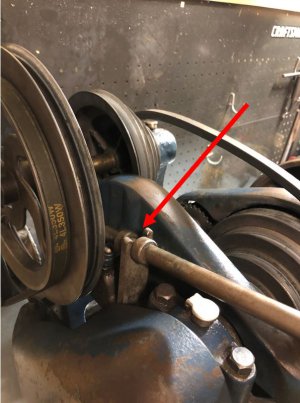- Joined
- Dec 25, 2011
- Messages
- 10,424
Three comments:
The correct and factory recommended oil for everything except the gear teeth and the ways is SAE 20 ND. If you find the equivalent but with an ISO rating, either ISO 68 or ISO 46 cross to SAE 20. With ISO 68 probably being preferred. For the ways, use Way Oil, which differs mainly in clinging to the vertical surfaces better.
The proper lubricant for the gear teeth is grease, specifically one with a high temperature rating. Most grease found in tubes at consumer grade Autoparts stores will be unsatisfactory because it will quickly liquefy and sling off. The claim that you shouldn't use grease on the gears because it attracts and holds chips or shavings is, while partially true, apparently due to the results of operating the lathe without the gear covers provided but often lost or discarded. So it is a case of one bad decision leading to another one. SAE90W would be fine for the gears if the Atlas lathes were provided with an oil filled sump and possibly an oil pump. However, they are not.
Not wishing to re-start the argument over link-belts versus V-belts, I will only point out that the lathe in question here has babbit bearings which require little effort to remove. And that in any case, the owner needs to do that anyway for condition inspection of the bearings and journals and possible adjustment.
The correct and factory recommended oil for everything except the gear teeth and the ways is SAE 20 ND. If you find the equivalent but with an ISO rating, either ISO 68 or ISO 46 cross to SAE 20. With ISO 68 probably being preferred. For the ways, use Way Oil, which differs mainly in clinging to the vertical surfaces better.
The proper lubricant for the gear teeth is grease, specifically one with a high temperature rating. Most grease found in tubes at consumer grade Autoparts stores will be unsatisfactory because it will quickly liquefy and sling off. The claim that you shouldn't use grease on the gears because it attracts and holds chips or shavings is, while partially true, apparently due to the results of operating the lathe without the gear covers provided but often lost or discarded. So it is a case of one bad decision leading to another one. SAE90W would be fine for the gears if the Atlas lathes were provided with an oil filled sump and possibly an oil pump. However, they are not.
Not wishing to re-start the argument over link-belts versus V-belts, I will only point out that the lathe in question here has babbit bearings which require little effort to remove. And that in any case, the owner needs to do that anyway for condition inspection of the bearings and journals and possible adjustment.

